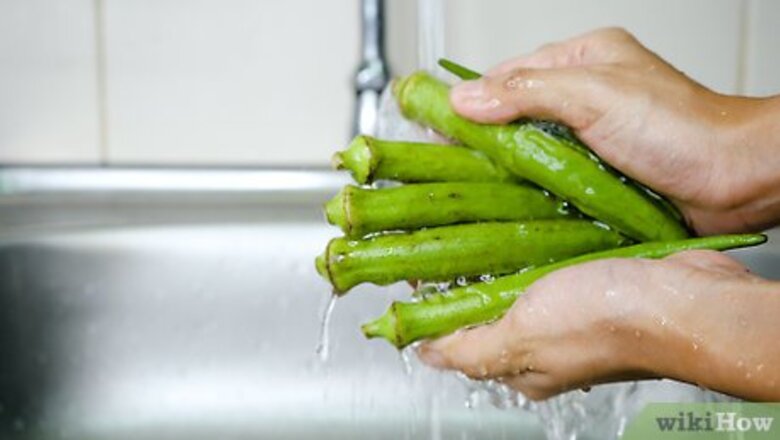
views
Washing and Preparing Okra for Cooking

Rinse the okra thoroughly under cold running water. Place the okra pods in a strainer and hold it over the sink under cold running water from the tap. Move the pods around with your hands to make sure you rinse them all off. If you plan to cook a lot of okra and the strainer is very full, then you can work in smaller batches to make it easier to clean the pods thoroughly. If you are just using a small number of pods, you can wash them individually by holding 1-2 in your hand at a time rather than using a strainer.
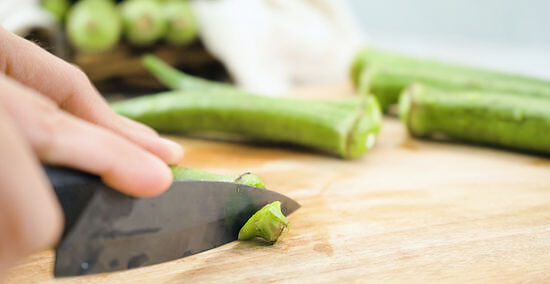
Trim off the very tip of the stem with a paring knife. Cut around the base of the stem without cutting into the okra pod. Discard the tips of the stems. This part of the stem can be very woody and not good for eating. The rest of the okra pod can be eaten whole.
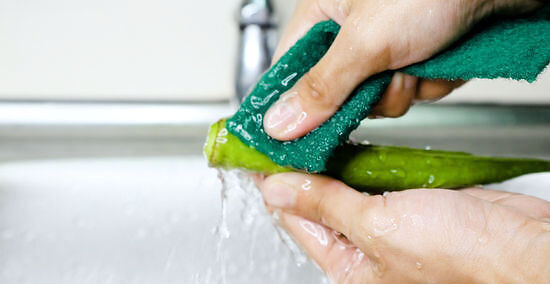
Rub spines off older, larger pods under running water. Okra pods begin to grow small, fuzzy spines as they mature that you need to remove before eating them. Hold any such pods under running water and gently rub them all over with a scouring pad, vegetable brush, or paper towel to remove the tiny spines. In general, smaller, younger okra pods are better for cooking, as they are more tender and have not yet developed spines. Try to use okra pods that are under 6 in (15 cm) long, as these are younger and fresher tasting.
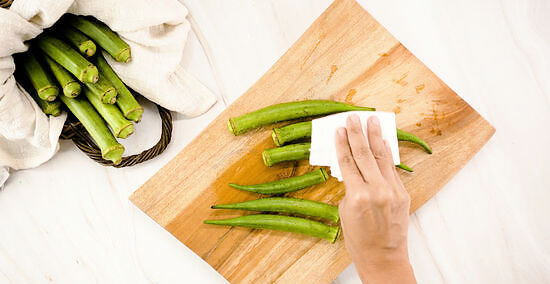
Pat the okra dry with a paper towel and leave it to air dry completely. Lay out the okra pods on a flat, clean surface after rinsing them. Pat them dry with a paper towel as much as you can and then let them sit until they are totally dry to the touch.Tip: If you want to store any leftover okra long term, you can freeze or pickle it. Wet okra pods will release more liquid, or slime, than dry ones.
Reducing Sliminess
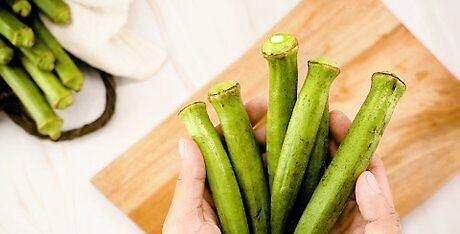
Make sure the okra pods are completely dry before cooking them. Pods that are still wet will start to steam during cooking, which causes them to release more of their slimy liquid. Pat the pods dry and then let them air dry completely before cooking if you want them to release the least amount of liquid possible. This isn’t as important if you are using the okra as a thickener. You can just pat it dry and then use it according to the recipe if you are making something like a stew or gumbo that you want to thicken.

Cook okra with room between the pods. Overcrowding okra in a pan or on a baking sheet will lower the heat that reaches each individual pod and cause them to release more liquid. Leave space between each pod for the heat to circulate if you are cooking okra in a pan or on a baking sheet. You can avoid overcrowding by working in smaller batches when cooking okra in a pan or by using 2 baking sheets if you are cooking okra in the oven.
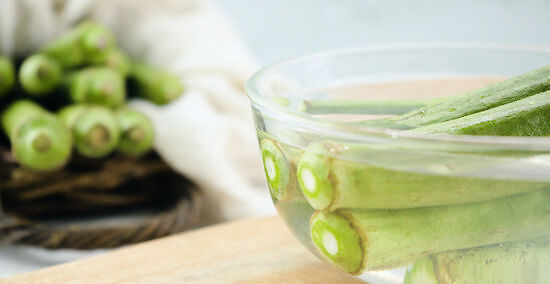
Soak the okra in vinegar for 30 minutes before cooking it. Use ⁄2 c (120 mL) of white vinegar for every 1 lb (0.45 kg) of okra. Let the okra soak for 30 minutes in the vinegar, then drain it and let it dry before you cook it. The acidity of vinegar helps to reduce the natural slime of okra. You can also add a splash of vinegar, lemon juice, or wine to any recipe to help reduce the amount of liquid the okra releases. Chopped tomatoes help as well.
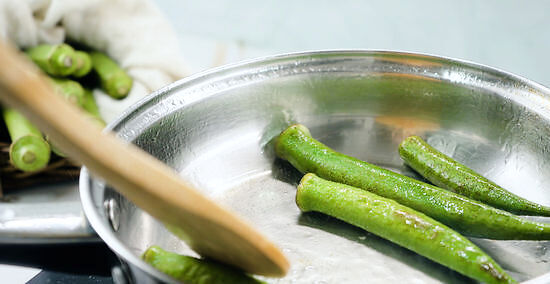
Fry, grill, or saute the okra over high heat. High heat helps reduce the amount of liquid that okra releases. Set the stove, oven, or grill to very high heat any time you want to saute, roast, or grill okra to make it less slimy.Tip: Grilled okra goes nicely with other grilled vegetables like eggplant, zucchini, tomatoes, peppers, and onions. Searing the outside of okra also adds a very nice charred flavor that complements its natural flavor. Frying the okra for one to two minutes will allow the mucous membrane around the seeds to break down, reducing sliminess.




















Comments
0 comment